The Growing Influence of AI in Project Forecasting
AI-powered tools are revolutionizing project management by delivering unprecedented forecast accuracy and enhancing resource planning. By leveraging vast historical datasets and real-time analytics, these technologies enable dynamic updates and granular insights, transforming how organizations predict timelines, costs, and resource needs. This article explores the statistical improvements and operational efficiencies AI brings to project forecasting, presenting an in-depth look at the tools, methodologies, and impacts shaping this evolution.
AI-Driven Accuracy Enhancements in Project Cost and Timeline Forecasting
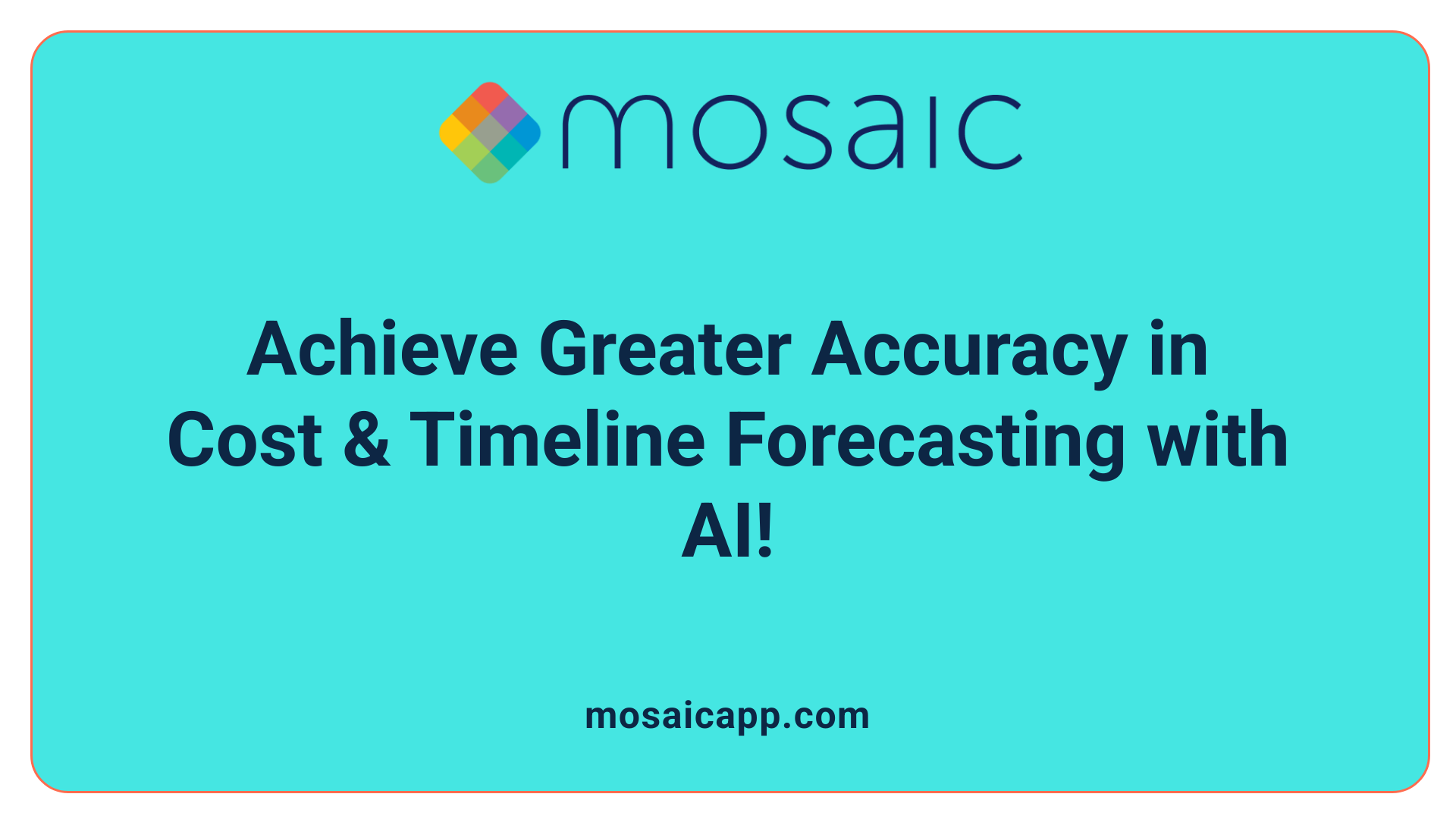
How does AI improve the accuracy of project timelines and cost forecasts?
AI enhances project management by analyzing extensive historical data from past projects, including time estimates, delays, and completion rates. By identifying recurring patterns, AI can generate more accurate timeline predictions that reflect real-world complexities.
Real-time tracking of costs and project progress is another critical capability of AI-powered tools. These systems monitor current work status, dependencies, and resource utilization continuously, enabling dynamic adjustments to forecasts as new data emerges.
This ongoing data analysis allows early detection of risks related to timeline slippages or budget overruns. For example, AI can flag potential delays based on past delay patterns and current task progress, giving project managers a proactive advantage to mitigate issues before they escalate.
Importantly, the effectiveness of AI in forecasting depends heavily on high-quality, clean historical project data. Robust data collection and maintenance practices ensure that AI models receive accurate inputs, which leads to more reliable and actionable predictions.
By combining advanced data analytics with continuous monitoring, AI supports project managers in delivering precise cost and timeline forecasts, reducing surprises, and improving overall project outcomes.
Enhancing Resource and Capacity Planning with AI Forecasting Tools
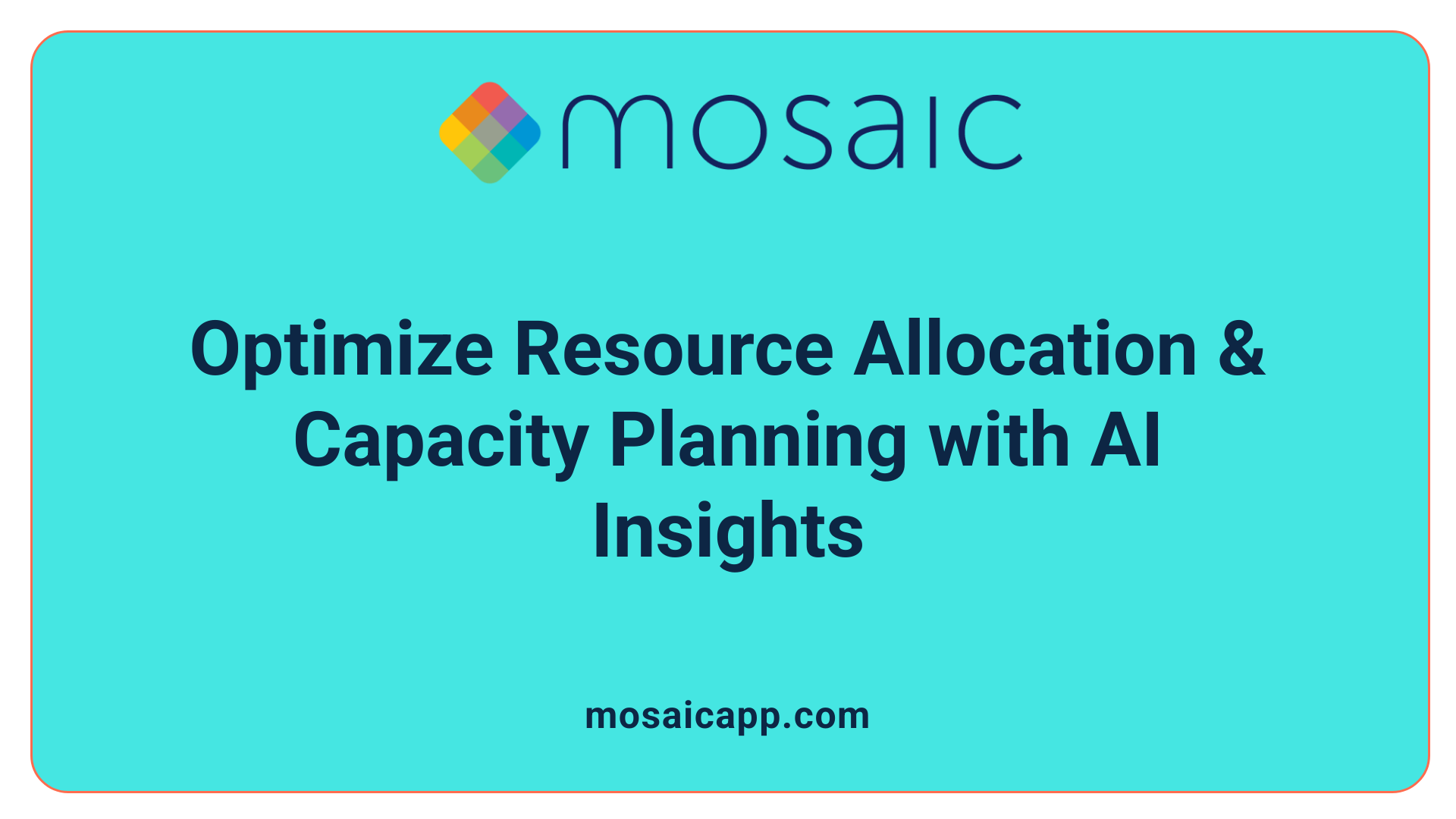
How do AI tools optimize resource allocation and capacity planning?
AI tools play a crucial role in resource and capacity planning by predicting project needs based on real-time and historical data. They detect when resources are overloaded or underutilized, enabling project managers to better allocate personnel and materials. This proactive approach reduces bottlenecks and improves overall project efficiency.
How does AI help detect resource overloads and underutilization?
By continuously monitoring work progress and comparing it against past project patterns, AI systems identify imbalances in resource usage. If a team member or asset is stretched too thin or left idle, the AI flags these issues early. This allows for timely adjustments, preventing delays and enhancing productivity.
What role does scenario planning play in resource management?
Scenario planning powered by AI enables project managers to simulate changes like adding team members or reprioritizing tasks. This helps anticipate the impact on timelines and resource capacity before making actual changes. Such simulations foster informed decision-making and adaptive project management.
How does AI improve capacity management and timeline estimates?
AI continuously refines delivery forecasts based on current progress, resource availability, and detected risks, providing dynamic timeline updates. These insights improve accuracy in planning and allow teams to respond swiftly to changes, ensuring projects stay on track.
AI tools serve as decision-support systems that augment human judgment by offering granular insights into resource and capacity optimization. Their ability to analyze complex patterns and adjust forecasts dynamically leads to enhanced operational efficiency and more reliable project execution.
Automated Financial Forecasting and Operational Efficiency in Project Management
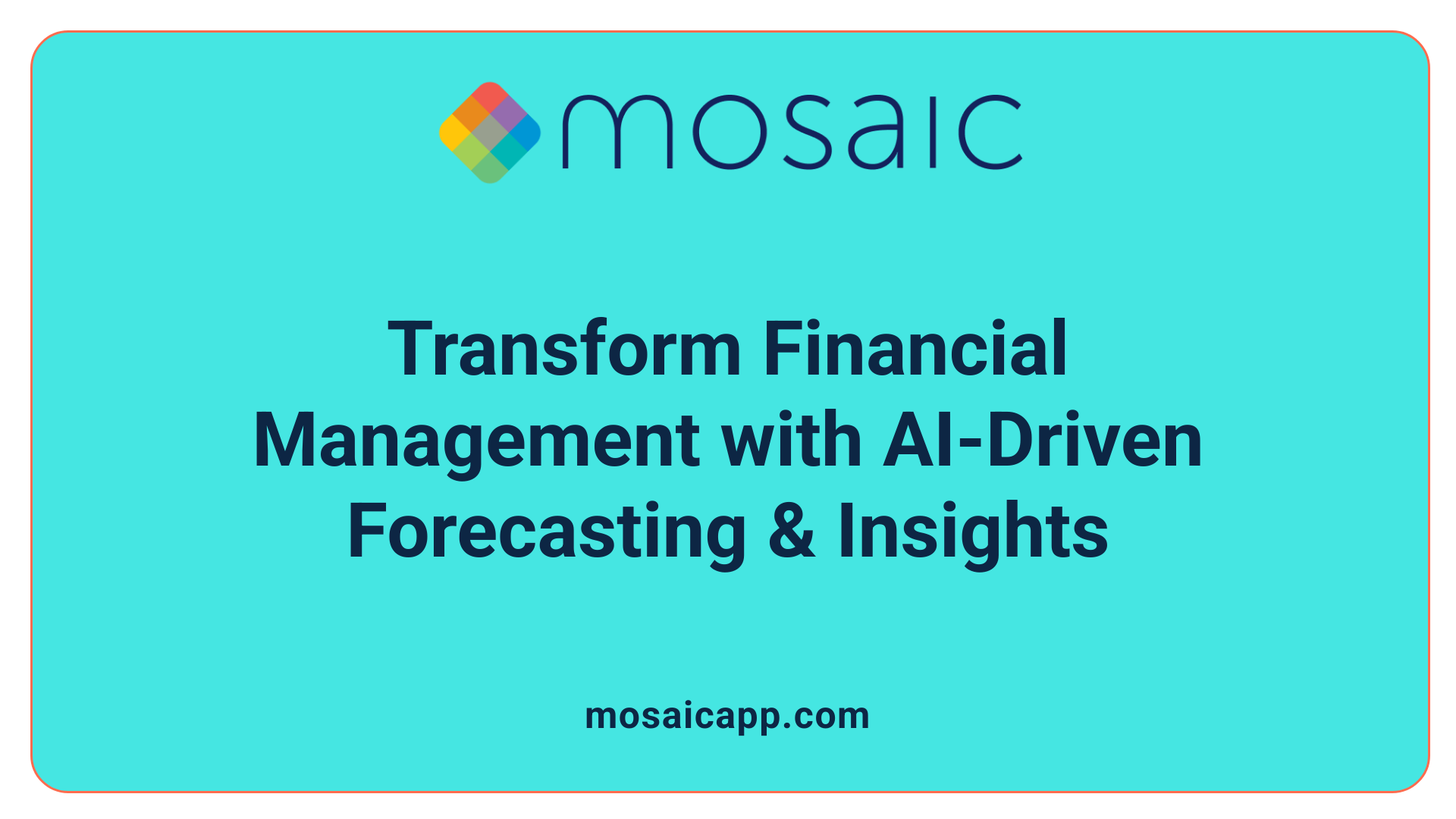
How does AI improve financial management and forecasting in project settings?
AI-powered tools revolutionize financial management in projects by automating the continuous tracking and analysis of financial data. Platforms like Fuelfinance leverage AI forecasting models to analyze historical and real-time data, enabling ongoing updates to key financial indicators such as revenue, expenses, and cash flow. This dynamic approach ensures predictions stay accurate even as new information arrives.
AI-powered financial tracking and reporting
By integrating with accounting platforms like QuickBooks and numerous data sources like Stripe and HubSpot, AI systems synchronize data instantly, providing comprehensive visibility into a project's financial health. They monitor cash flow trends, revenue breakdowns, marketing return on investment, and expense tracking on a unified dashboard, which supports efficient resource management and strategic planning.
Automated generation of financial statements
AI tools automatically generate critical financial documents such as Profit & Loss statements, cash flow reports, and balance sheets. This automation significantly cuts down manual reporting efforts while enhancing precision and consistency, enabling project managers to focus on decision-making rather than data compilation.
Continuous updates to revenue, expenses, and cash flow predictions
AI systems dynamically adapt forecasts by analyzing both past project outcomes and incoming financial data. This continuous refinement helps identify potential risks early and adjust budgets proactively, contributing to more stable and predictable project finances.
Improved operational efficiency and client satisfaction
Effective financial management through AI translates into smoother project execution and resource allocation. It aids in optimizing budgets and timelines, which directly impacts client satisfaction by reducing surprises and delays. The heightened transparency and accuracy in financial forecasting foster trust and enable better alignment between project teams and clients.
| Feature | Description | Impact on Project Management |
|---|---|---|
| Automated Financial Tracking | Real-time syncing of multi-source financial data | Enhanced visibility and timely decision-making |
| Automated Financial Statements | Generation of P&L, cash flow, and balance sheets | Reduced manual effort; improved accuracy |
| Continuous Forecast Updates | Ongoing analysis of historical and new data | Increased forecasting reliability; early risk detection |
| Operational Efficiency | Streamlining resource and budget planning | Smoother execution; higher client satisfaction |
Comprehensive Platforms Integrating AI for Project and Financial Planning
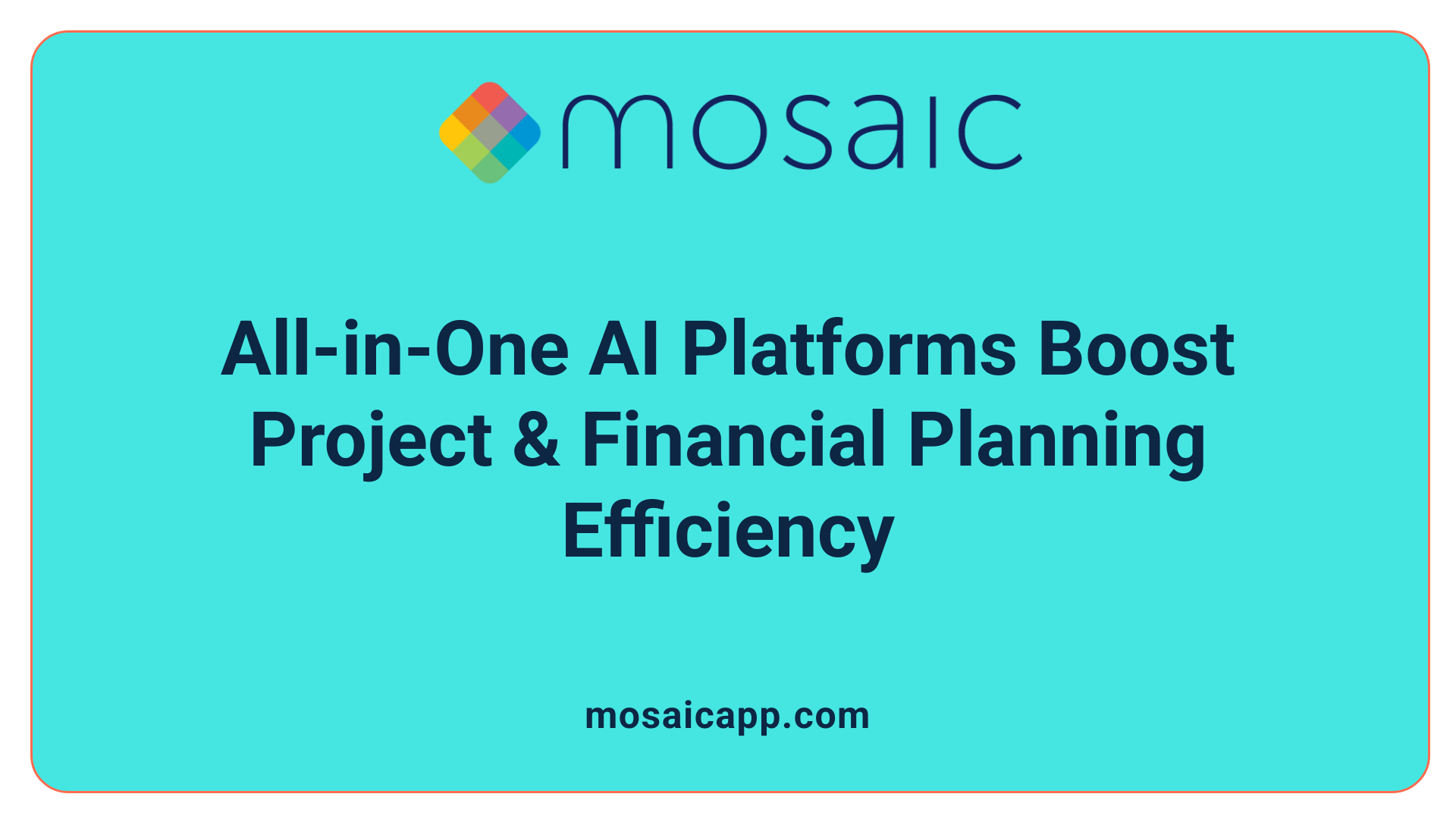
Features of Forecast’s Platform
Forecast’s platform stands out by offering a suite of AI-driven tools that streamline project management and financial planning. It provides automated financial tracking to monitor costs in real-time, resource allocation recommendations to optimize workforce and assets, and proactive risk identification to foresee potential issues before they escalate. These features collectively improve operational efficiency and empower project managers with actionable insights.
Fuelfinance AI Financial Management Capabilities
Fuelfinance specializes in financial management by leveraging AI forecasting models to analyze historical financial data, recognize market trends, and detect risks dynamically. The platform automatically generates crucial financial statements such as Profit & Loss reports, cash flow summaries, and balance sheets, significantly reducing manual workload and boosting forecast accuracy. It continuously updates revenue, expenses, and cash flow metrics as new data arrives, ensuring up-to-date financial visibility.
Integration with External Data Sources and Software
A significant advantage of platforms like Fuelfinance is their ability to integrate seamlessly with over 300 data sources, including popular tools like QuickBooks, Stripe, and HubSpot. This real-time data synchronization enables dynamic forecasting and enhances decision-making. Additionally, incorporating external data sources supports more granular and accurate analyses, helping businesses tailor their planning based on comprehensive information.
Benefits of Unified Dashboards and KPI Suggestions
Both Forecast and Fuelfinance offer all-in-one financial dashboards that consolidate vital metrics such as cash flow trends, revenue breakdowns, marketing ROI, and expense monitoring. These centralized views simplify resource management and planning. Furthermore, Fuelfinance suggests KPIs tailored to specific business models and employs anomaly detection to flag irregularities early, fostering proactive risk management and timely strategic decisions.
AI’s Impact on Demand Forecasting Accuracy and Supply Chain Integration

How do AI tools improve demand forecasting accuracy and integrate with supply chain planning?
AI-powered tools dramatically enhance demand forecasting by analyzing vast amounts of historical data. These systems detect complex patterns that traditional methods might miss, leading to more precise predictions of customer demand. Improved accuracy reduces costly issues such as overstocking and stockouts, ultimately optimizing inventory levels.
Integration with advanced planning systems (APS) such as Blue Yonder, Kinaxis, and ketteQ further strengthens supply chain management. AI forecasts sync seamlessly with these platforms to refine production scheduling and resource allocation, aligning supply more closely with demand.
AI tools process data in real-time, allowing dynamic forecasting adjustments as market conditions and demand fluctuate. This agility supports quick responses to disruptions and shifts in demand, improving overall supply chain responsiveness.
Scenario planning models powered by AI help businesses navigate uncertainties. By simulating various demand or supply scenarios, companies can prepare flexible strategies that mitigate risks and improve workforce management—boosting workforce flexibility by about 20%.
The outcomes of deploying AI-driven demand forecasting are significant: supply chain errors are cut by 20 to 50 percent, and lost sales or product unavailability can decrease by up to 65 percent. These improvements translate into cost savings, better customer satisfaction, and more resilient supply chains.
Statistical Benefits and Cost Reduction through AI Automation in Project Management
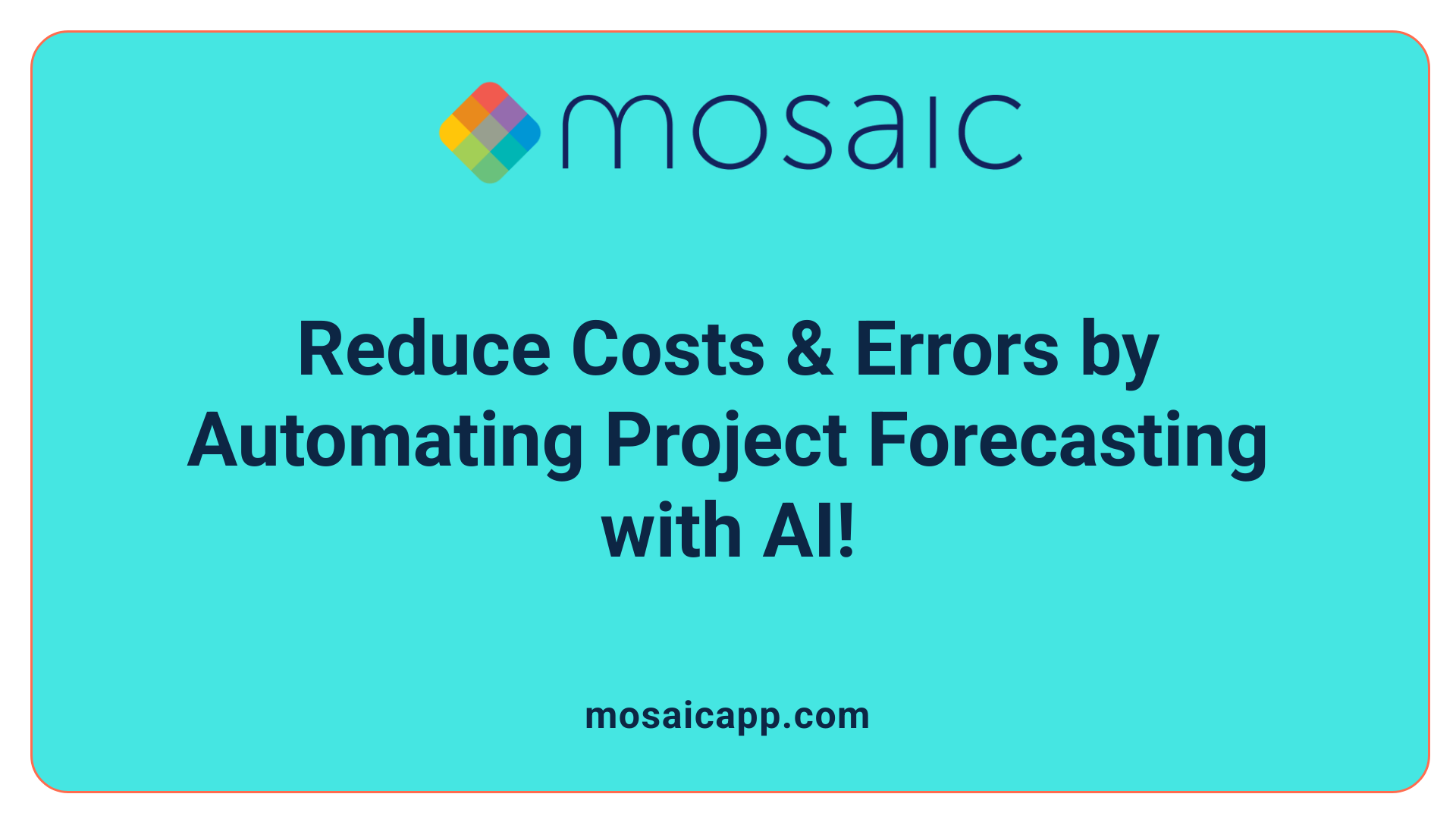
What are the measurable benefits of AI automation in project management and forecasting?
AI automation has significantly transformed project management and forecasting by enhancing efficiency and cutting costs. AI forecasting engines can automate up to 50 percent of workforce-management tasks. This automation contributes to cost reductions typically ranging from 10 to 15 percent, making resource planning and task allocation more streamlined and economical.
Moreover, AI-driven tools improve accuracy by reducing errors in supply chain and project management functions by 20 to 50 percent. This error reduction leads to fewer disruptions, less wasted resources, and ultimately smoother project execution.
Another notable impact of AI automation is agility improvements. Through the use of real-time data and continuous pattern identification, AI enables faster and more responsive forecasting adjustments. This capability allows organizations to react swiftly to demand shifts or unforeseen disruptions, surpassing the capabilities of traditional methods. The resulting operational agility enhances the ability to meet client needs and adapt workflows dynamically.
In essence, AI automation delivers measurable benefits by lowering operational costs, minimizing errors, and boosting agility, making it an indispensable component of modern project management and forecasting strategies.
Advanced Forecasting Techniques: Ensemble Models, Smoothing, and External Data Integration
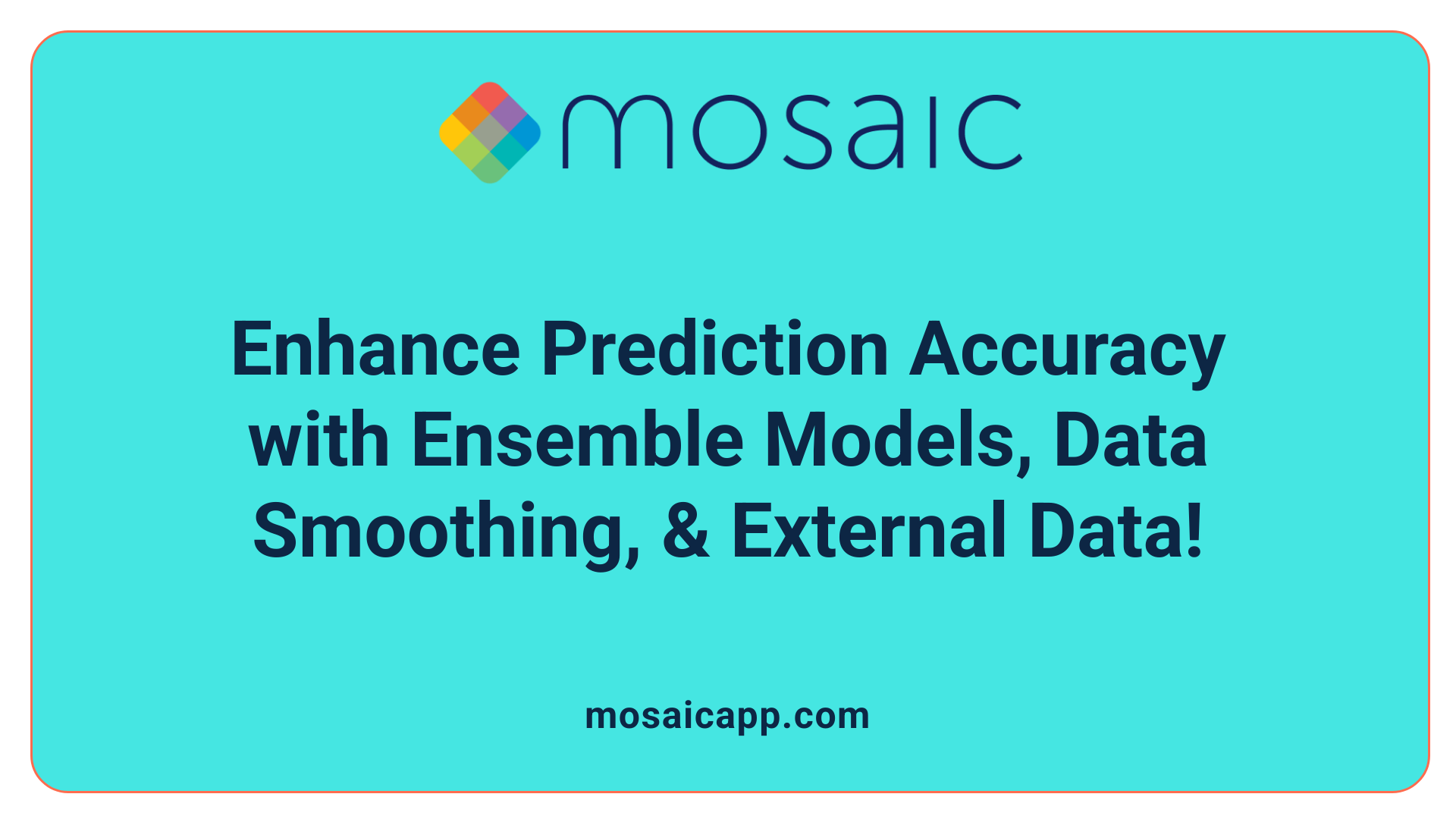
How do advanced AI forecasting techniques improve prediction reliability?
Advanced AI forecasting leverages several sophisticated methods to boost prediction accuracy and operational flexibility. Ensemble forecasting models combine multiple individual models, increasing accuracy by up to 10% and decreasing costs by 10 to 15%. This approach mitigates the weaknesses of single models by leveraging diverse perspectives on data.
Data smoothing techniques allow AI to handle anomalies effectively by learning from unusual sales periods without letting outliers distort forecasts. This results in more stable and accurate predictions over time.
Integrating external data sources such as weather information through APIs amplifies forecast precision. For example, weather data helps predict maintenance demand influenced by climate patterns, enabling more responsive supply management.
Scenario planning tools play a critical role in managing uncertainty. By simulating different changes in demand, supply conditions, and resource availability, businesses can proactively adjust plans. This flexibility improves workforce agility by about 20%, helping teams quickly respond to dynamic market environments.
Together, these techniques create a robust forecasting framework that supports better decision-making, reduces risk exposure, and enhances resource allocation in project and supply chain management.
Implementing AI Forecasting Solutions: Best Practices and Change Management
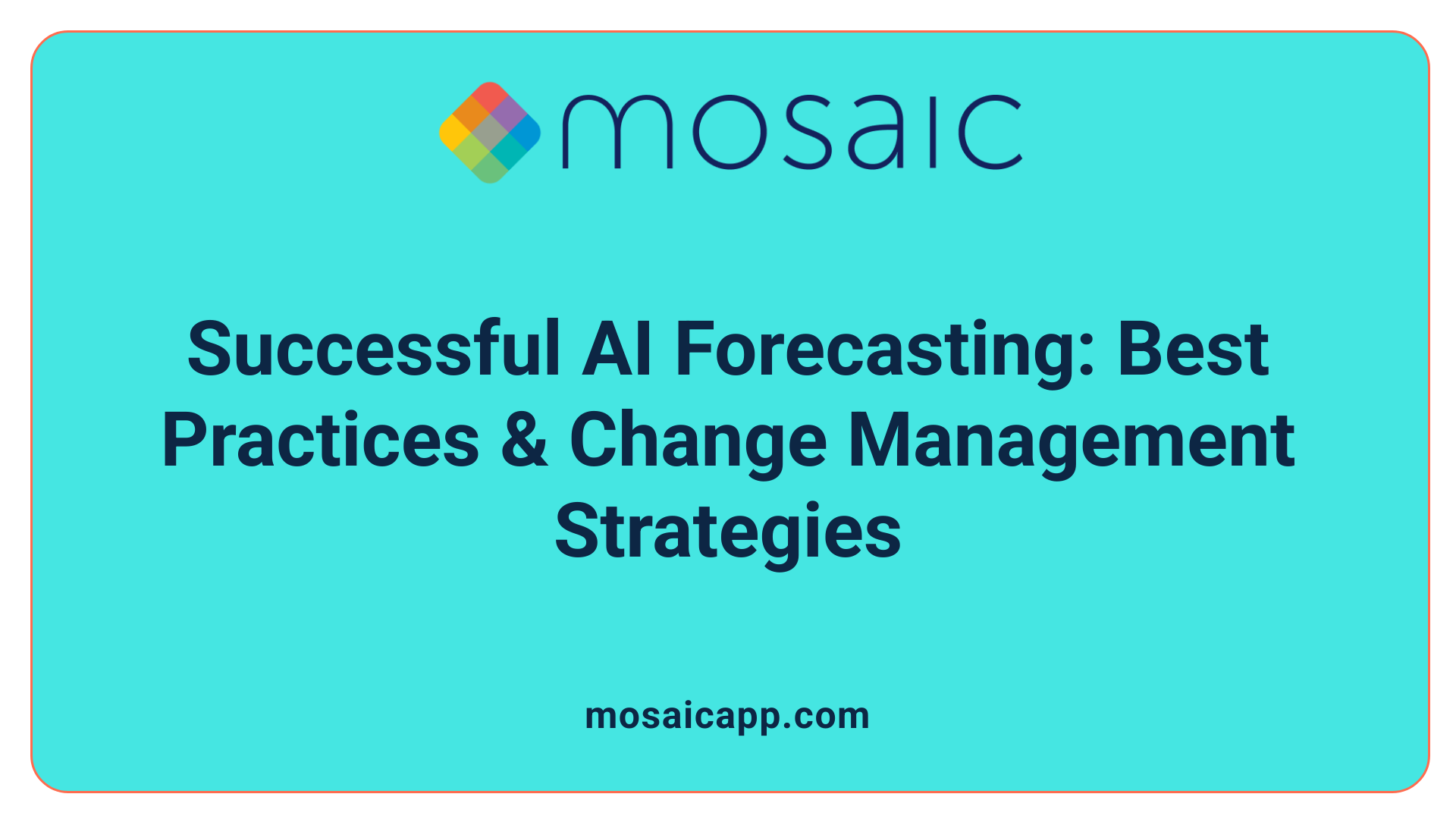
What are the key considerations for successful AI forecasting implementation in project management?
Successful implementation of AI forecasting in project management hinges on several important considerations. First, defining clear success criteria establishes what the organization aims to achieve—such as improved budget accuracy or enhanced risk detection. This clarity guides subsequent processes.
Assessing the capabilities of existing Advanced Planning Systems (APS) like Blue Yonder or Kinaxis helps identify integration opportunities and limitations. Choosing suitable AI models tailored to the project's data environment and objectives is crucial, as these models need to match specific forecasting needs.
Establishing robust data pipelines ensures continuous and accurate data flow from various sources, supporting dynamic updates and real-time forecasting adjustments. Since AI models depend heavily on high-quality data, maintaining data hygiene is essential.
Ongoing fine-tuning of the AI models is necessary to adapt to new information, evolving project conditions, and emerging risks. This iterative process improves reliability and forecast accuracy.
Equally vital is effective change management, which fosters organizational readiness and acceptance. Successful AI adoption requires engaging stakeholders through training and communication to smooth the transition and integrate AI insights as decision-support tools rather than replacements for human judgment. Proper change management influences the sustainability and long-term impact of supply chain and project management transformations powered by AI.
AI as a Decision Support Tool in Project Forecasting and Management
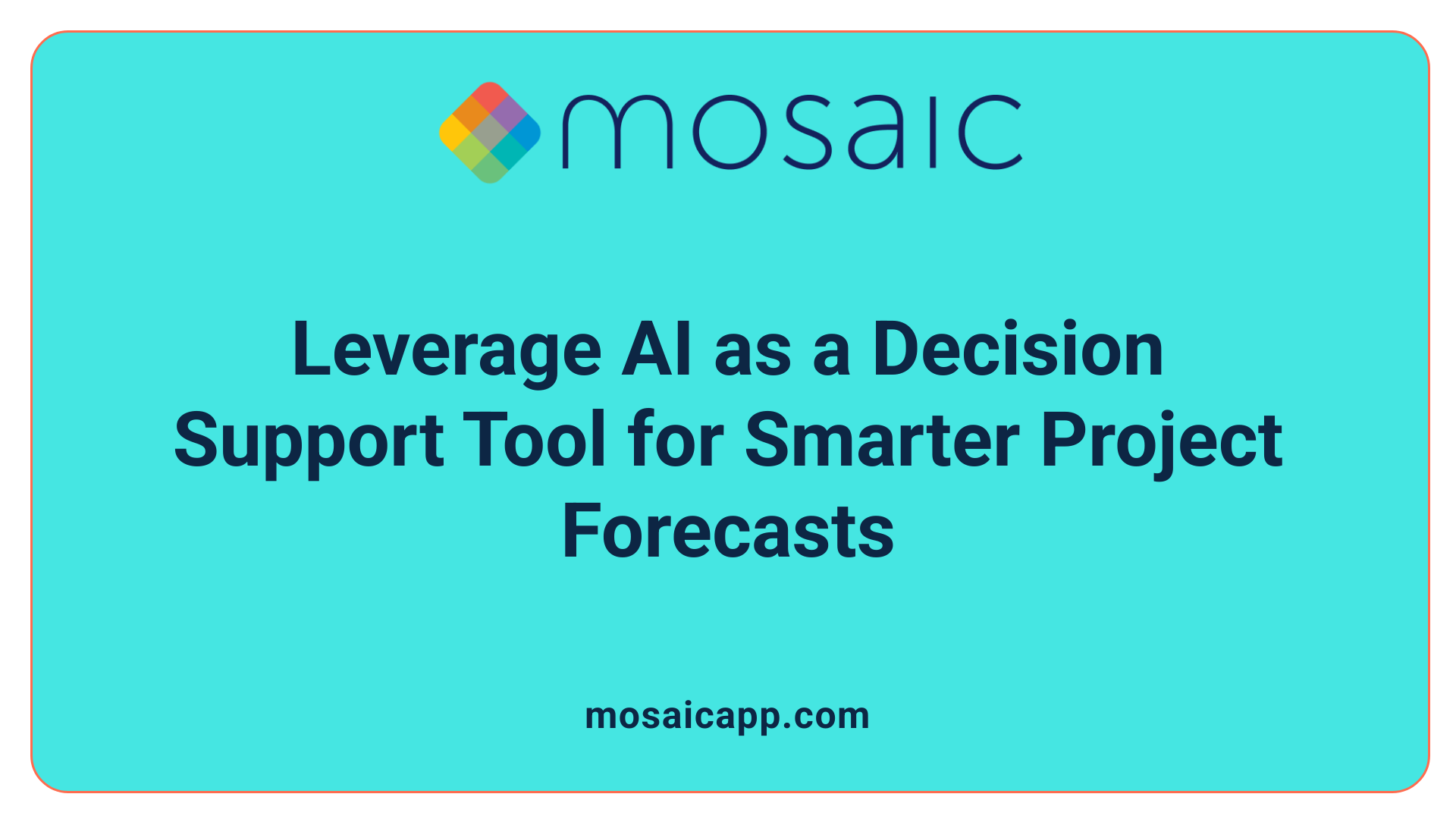
How does AI function as a decision-support tool in project forecasting?
AI serves to enhance project forecasting and management by providing sophisticated data analysis and predictive insights that supplement human judgment rather than replace it. It processes large volumes of historical project data, identifies complex patterns, and generates dynamic forecasts that reflect current progress, resource availability, and risks.
Project managers use AI-generated insights—such as timeline risk detection, scenario planning outcomes, and resource utilization alerts—to make informed decisions within the broader organizational and contextual framework. This blend of AI analytics and managerial experience ensures that project forecasts are both accurate and actionable.
Balancing these automated insights with managerial expertise allows for a more nuanced approach. Managers can interpret and adjust AI predictions based on factors AI might not fully capture, such as team dynamics or strategic priorities. The result is a decision-support system that leverages AI's computational strengths and human contextual understanding, improving overall project delivery accuracy and reducing surprises.
Such AI-driven decision support empowers managers to proactively manage risks and optimize resources, ultimately supporting more effective project planning and execution.
Addressing Data Challenges in AI Forecasting for Project Accuracy
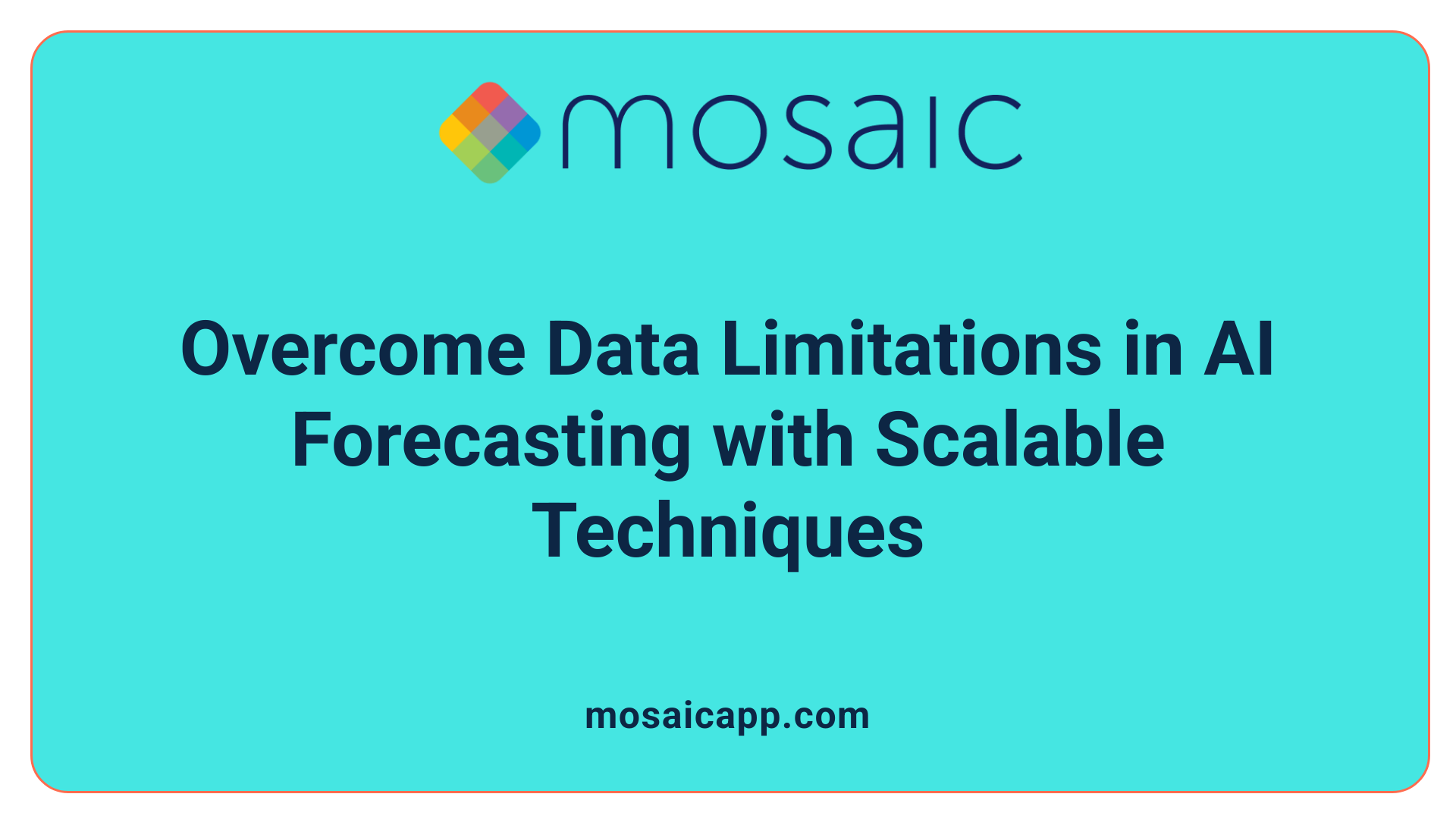
How do AI models maintain forecast accuracy in limited data environments?
AI forecasting models face challenges when data is sparse or incomplete, but several strategies help maintain accuracy despite these limitations.
Firstly, AI selects appropriate algorithms that are robust to smaller datasets, allowing meaningful pattern recognition without overfitting. To enhance learning, data augmentation and smoothing techniques are applied. Data augmentation involves creating synthetic data points or extrapolating from existing data to enrich the training set, while smoothing helps the model learn from irregularities or anomalies in historical sales or project timelines.
Secondly, scenario planning tools are vital. They allow businesses to model multiple plausible futures, preparing the AI to estimate a range of outcomes and uncertainties. This approach helps teams anticipate risks and adapt plans according to shifting demand or supply conditions, increasing agility and reducing unforeseen disruptions.
Thirdly, integrating external data sources provides additional context to internal datasets. For example, incorporating weather data via APIs can improve maintenance demand forecasts or project risk assessments. This enriched data environment enables AI models to generate more reliable and granular predictions, even when internal history is limited.
Overall, these methods—careful model selection, data enhancement techniques, scenario analysis, and external data integration—help AI sustain forecast reliability and support better project and supply chain decision-making in data-light environments.
The Transformative Power of AI in Project Forecasting
AI tools have significantly advanced the accuracy and reliability of project forecasting by integrating real-time data analytics, historical pattern recognition, and scenario-based planning. By improving cost and timeline predictions, optimizing resource allocation, and enhancing financial management, AI empowers project managers with actionable insights. The adoption of sophisticated forecasting techniques and comprehensive AI platforms supports an agile, efficient, and data-driven project management environment. While successful implementation depends on robust data practices and change management, the continued evolution and integration of AI technologies promise even greater forecast precision, operational excellence, and value delivery in project management.

